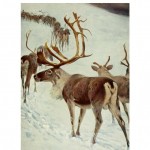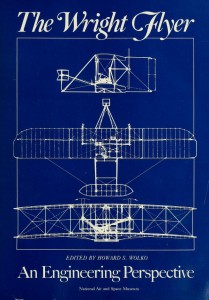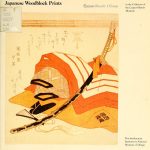 The Biodiversity Heritage Library (BHL), a consortium of institutions working to digitize biodiversity literature and make it freely available online at www.biodiversitylibrary.org, is helping scientists identify and conserve life on Earth. Scientists have long considered that inadequate access to the published literature is one of the chief impediments to the efficiency of research in the field. By removing boundaries to access, BHL is strengthening scientific and conservation efforts on every continent. The BHL currently provides access to nearly 40 million pages and over 50,000 images, free and available to the public online.
The Biodiversity Heritage Library (BHL), a consortium of institutions working to digitize biodiversity literature and make it freely available online at www.biodiversitylibrary.org, is helping scientists identify and conserve life on Earth. Scientists have long considered that inadequate access to the published literature is one of the chief impediments to the efficiency of research in the field. By removing boundaries to access, BHL is strengthening scientific and conservation efforts on every continent. The BHL currently provides access to nearly 40 million pages and over 50,000 images, free and available to the public online.
Smithsonian Libraries and Archives / Unbound
 Do you make your own holiday decorations? Have you ever wanted to make your own decorations? Or do you remember making decorations and gifts in school as a child? This 1923 booklet, Dennison’s Christmas Book, by Dennison Manufacturing Co. includes suggestions for Christmas, New Year, and Twelfth Night parties. For now, let’s take a look at the Christmas decorations.
Do you make your own holiday decorations? Have you ever wanted to make your own decorations? Or do you remember making decorations and gifts in school as a child? This 1923 booklet, Dennison’s Christmas Book, by Dennison Manufacturing Co. includes suggestions for Christmas, New Year, and Twelfth Night parties. For now, let’s take a look at the Christmas decorations.
 It’s December 17th — the anniversary of the Wright Brothers’ first machine powered air flight in Kitty Hawk, North Carolina. In remembrance of that date 109 years ago, the Smithsonian Libraries is featuring The Wright Flyer: An Engineering Perspective by Howard S. Wolko and John David Anderson. The online version of this 1987 Smithsonian Institution Press book is available via our Digital Library.
It’s December 17th — the anniversary of the Wright Brothers’ first machine powered air flight in Kitty Hawk, North Carolina. In remembrance of that date 109 years ago, the Smithsonian Libraries is featuring The Wright Flyer: An Engineering Perspective by Howard S. Wolko and John David Anderson. The online version of this 1987 Smithsonian Institution Press book is available via our Digital Library.

Today’s post was written by Martin Kalfatovic, Associate Director of the Smithsonian Libraries and Program Director of the Biodiversity Heritage Library.
Did you ever wonder about some of those fabulous items that you see in the Smithsonian gift shops when you’ve visited the Smithsonian in person? Or maybe you’ve done some online browsing at the Smithsonian Store online? Perhaps it’s likely that you’ve run across Smithsonian collections-based gifts in your favorite store, too?
 This post was written by Elizabeth Brunner, an intern at the American Art and Portrait Gallery Library September-December 2012.
This post was written by Elizabeth Brunner, an intern at the American Art and Portrait Gallery Library September-December 2012.
Joseph Keppler was the predominant political cartoonist of the late nineteenth century. His creation of the magazine, Puck, in 1877 brought him into a national position that allowed him to influence people’s political views and opinions. The magazine featured cartoon and caricature lithographs created by Keppler. The National Portrait Gallery is fortunate enough to own a few of Keppler’s lithographs from the height of his fame during the early 1880s. However, as a bibliophile, I was far more excited to discover that the American Art and Portrait Gallery Library owns one of the 300 copies of a limited-edition book that features some of Keppler’s best lithographs. Published in 1893, this book served Puck as an advertising tool and as a way to promote Keppler’s lithographs and talent.
We all scream for ice cream! Without question, ice cream is one of the most popular treats in America, but do you know much about its history?
According to Laura B. Weiss, author of Ice Cream: A Global History, iced drinks can be traced back to at least the ancient Greeks and Romans. But many historians believe that the emperors of the Tang Dynasty (618-907 AD) in China may have been the first to eat a frozen milk-like confection — made with fermented cow, goat or buffalo milk which had camphor added to make it flake like snow. Italians generally are credited with inventing ice cream as we know it today, popularizing a concoction of sugar, flavorings (often fruit like lemon or strawberry), and ice or snow sometime in the mid-seventeenth century. Ice cream was particularly favored by the French aristocracy in the 1800s, and Thomas Jefferson is said to have gained an appreciation for the treat while serving as US ambassador to France from 1784-1789.
 Roughly half of the Cultural Heritage Library (CHL), available online here, includes titles from the Smithsonian’s Art Libraries. While copyright restrictions prohibit much coverage of more contemporary titles, the CHL addresses a broad swath of art history’s major movements and themes, including wildly popular and renowned movements like Cubism and Impressionism. Sometimes we isolate historical events; we forget that preceding events and influences play major roles in what comes next. This seems to be especially easy when it comes to art history’s tendency to declare masterpieces and the genius of the artisté. This month we take a look at part of what made Van Gogh and Monet so relevant for their time and enduring into ours: ukiyo-e, the “floating world” of Japanese woodblock prints.
Roughly half of the Cultural Heritage Library (CHL), available online here, includes titles from the Smithsonian’s Art Libraries. While copyright restrictions prohibit much coverage of more contemporary titles, the CHL addresses a broad swath of art history’s major movements and themes, including wildly popular and renowned movements like Cubism and Impressionism. Sometimes we isolate historical events; we forget that preceding events and influences play major roles in what comes next. This seems to be especially easy when it comes to art history’s tendency to declare masterpieces and the genius of the artisté. This month we take a look at part of what made Van Gogh and Monet so relevant for their time and enduring into ours: ukiyo-e, the “floating world” of Japanese woodblock prints.

